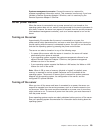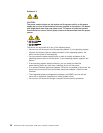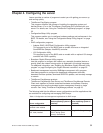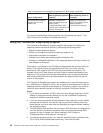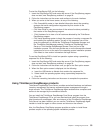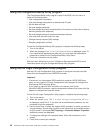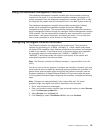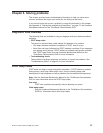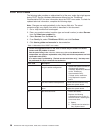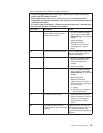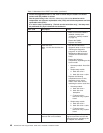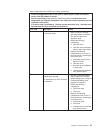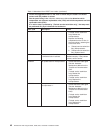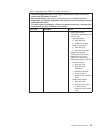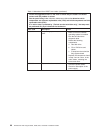
Chapter 5. Solving problems
This chapter provides basic troubleshooting information to help you solve some
common problems that might occur while you are setting up the server.
If you cannot locate and correct a problem by using the information in this chapter,
see Appendix A, “Getting help and technical assistance,” on page 57, the Hardware
Maintenance Manual on the ThinkServer Documentation DVD.
Diagnostic tools overview
The following tools are available to help you diagnose and solve hardware-related
problems:
v POST beep codes
The power-on self-test beep codes indicate the detection of a problem.
– One beep indicates successful completion of POST, with no errors.
– More than one beep indicates that POST detected a problem. Error messages
also appear during startup if POST detects a hardware-configuration problem.
See “POST beep codes” and the Hardware Maintenance Manual on the
ThinkServer Documentation DVD for more information.
v Troubleshooting charts
These charts list problem symptoms and actions to correct the problems. See
“Troubleshooting tables” on page 45 for more information.
POST beep codes
POST emits one beep to signal successful completion. If POST detects a problem
during startup, other beep codes might occur. Use the following beep code
descriptions to help diagnose and solve problems that are detected during startup.
Note: See the Hardware Maintenance Manual on the ThinkServer Documentation
DVD for more information about the POST beep codes.
One
beep
POST was completed successfully without detecting any errors.
Other beep codes
See the Hardware Maintenance Manual on the ThinkServer Documentation
DVDD for information about other beep codes.
© Lenovo 2008. Portions © IBM Corp. 2008. 37



